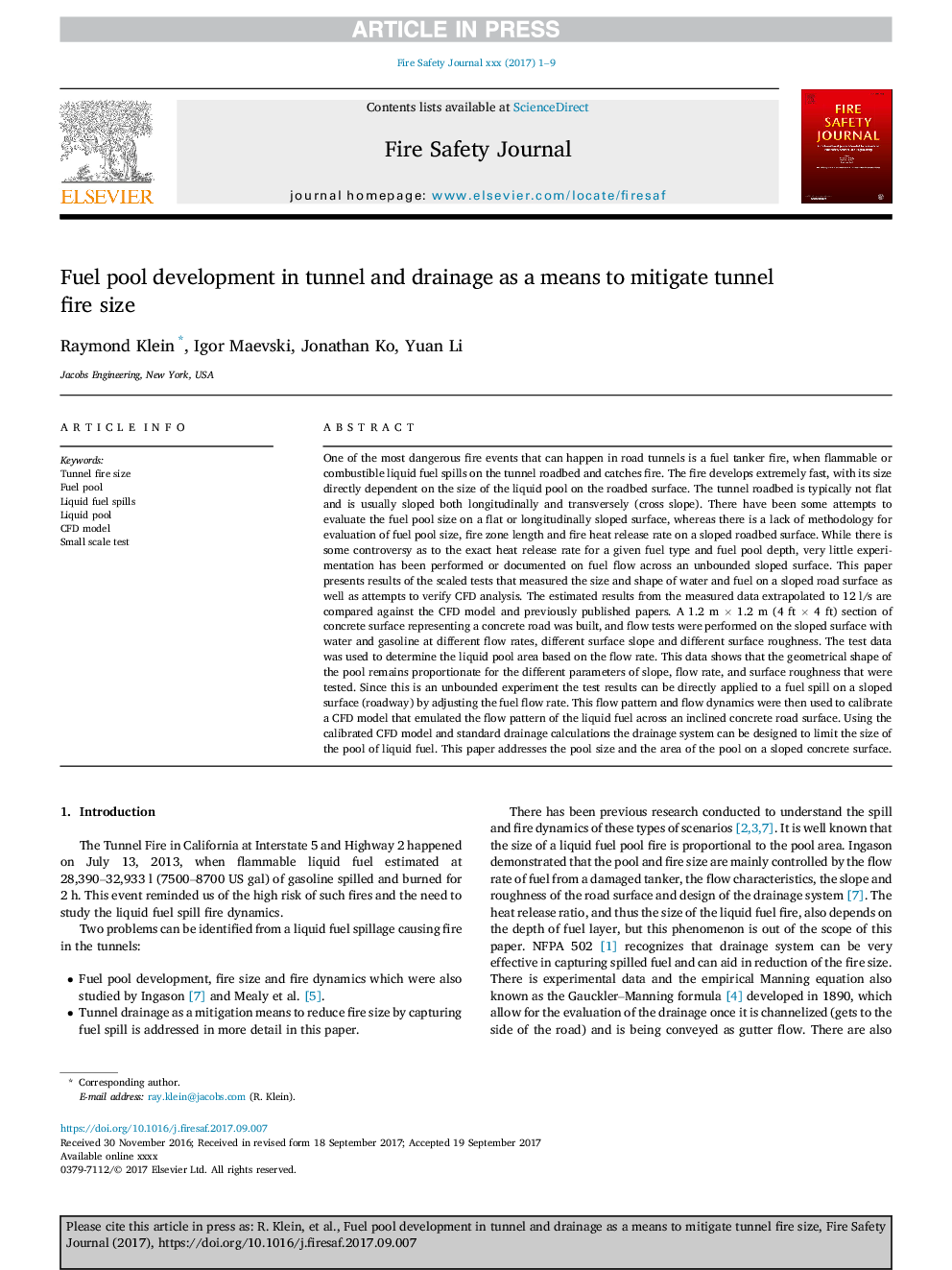| کد مقاله | کد نشریه | سال انتشار | مقاله انگلیسی | نسخه تمام متن |
|---|---|---|---|---|
| 6741711 | 1429206 | 2018 | 9 صفحه PDF | دانلود رایگان |
عنوان انگلیسی مقاله ISI
Fuel pool development in tunnel and drainage as a means to mitigate tunnel fire size
ترجمه فارسی عنوان
توسعه استخر سوخت در تونل و زهکشی به عنوان وسیله ای برای کاهش میزان آتش سوزی تونل
دانلود مقاله + سفارش ترجمه
دانلود مقاله ISI انگلیسی
رایگان برای ایرانیان
کلمات کلیدی
موضوعات مرتبط
مهندسی و علوم پایه
سایر رشته های مهندسی
مهندسی عمران و سازه
چکیده انگلیسی
One of the most dangerous fire events that can happen in road tunnels is a fuel tanker fire, when flammable or combustible liquid fuel spills on the tunnel roadbed and catches fire. The fire develops extremely fast, with its size directly dependent on the size of the liquid pool on the roadbed surface. The tunnel roadbed is typically not flat and is usually sloped both longitudinally and transversely (cross slope). There have been some attempts to evaluate the fuel pool size on a flat or longitudinally sloped surface, whereas there is a lack of methodology for evaluation of fuel pool size, fire zone length and fire heat release rate on a sloped roadbed surface. While there is some controversy as to the exact heat release rate for a given fuel type and fuel pool depth, very little experimentation has been performed or documented on fuel flow across an unbounded sloped surface. This paper presents results of the scaled tests that measured the size and shape of water and fuel on a sloped road surface as well as attempts to verify CFD analysis. The estimated results from the measured data extrapolated to 12 l/s are compared against the CFD model and previously published papers. A 1.2 m Ã 1.2 m (4 ft Ã 4 ft) section of concrete surface representing a concrete road was built, and flow tests were performed on the sloped surface with water and gasoline at different flow rates, different surface slope and different surface roughness. The test data was used to determine the liquid pool area based on the flow rate. This data shows that the geometrical shape of the pool remains proportionate for the different parameters of slope, flow rate, and surface roughness that were tested. Since this is an unbounded experiment the test results can be directly applied to a fuel spill on a sloped surface (roadway) by adjusting the fuel flow rate. This flow pattern and flow dynamics were then used to calibrate a CFD model that emulated the flow pattern of the liquid fuel across an inclined concrete road surface. Using the calibrated CFD model and standard drainage calculations the drainage system can be designed to limit the size of the pool of liquid fuel. This paper addresses the pool size and the area of the pool on a sloped concrete surface.
ناشر
Database: Elsevier - ScienceDirect (ساینس دایرکت)
Journal: Fire Safety Journal - Volume 97, April 2018, Pages 87-95
Journal: Fire Safety Journal - Volume 97, April 2018, Pages 87-95
نویسندگان
Raymond Klein, Igor Maevski, Jonathan Ko, Yuan Li,
